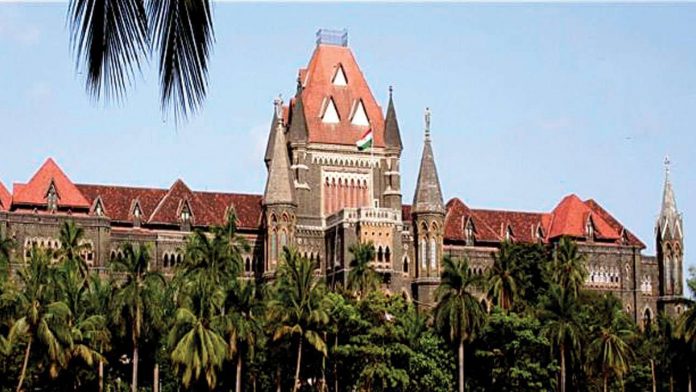This article is written by Vivek Maurya from ICFAI Law University, Dehradun. The article deals with the need to protect the museum and architectural monuments in the time of the pandemic.
Table of Contents
Introduction
Throughout the world, museums and architectural monuments are facing the effect of COVID-19, as populations are requested to remain at home, and social events are cancelled. Since the flare-up of the virus, the historical centres, big or little, public or private, have needed to close their entryways. An expected 90% of the world’s around 60,000 historical centres are confronting full, halfway, or possible conclusion. Notwithstanding the size, area, or status, exhibition halls are confronting extreme difficulties, including securing their collections, paying their employees, etc. They add to our society, propose inventive thoughts, and rouse everybody in this troublesome and questionable time.
The need to protect museums and architectural monuments in times of the pandemic from falling down
Among the most affected sectors, museums and architectural monuments are those whose survival is now in danger. The historical centres have seen the greatest monetary loss during the pandemic period. The galleries have begun to move to online exhibitions. Most of the museums can’t pay the employees their wages. Subsequently, the partners need to take unique supporting exercises regarding the architectural conditions to survive in the post-COVID-19 era.
Impact of COVID-19 on museums and architectural monuments
With the nationwide lockdown, all general places are shut, including museums and historical architectures across the globe. With the closing of museums for visitors and the government asking its citizens to stay inside and maintain social distance, a large number of museums have suffered economically. These mainly include private museums whose primary wellspring of income is ticket deals. A ton of these private museums have laid off half of the workers. Private as well as public museums get awards and help from the government, and different establishments also acquire a lump of their pay through visitors or travellers.
In India, museums were asked by the government to close their entrance for guests during the pandemic and the effect of this can be seen not just on revenue but also on the collection of the historical centre, which requires everyday support and preventive protection measures. With exhibition halls shutting and employees being asked to work from home, it’s the assortment that is enduring the most and our past is disintegrating with our present.
Because of this pandemic, various art presentations and Museum Biennale have been facing uncertainty around the world. For example, in India, Bihar gallery facilitated India’s first Museum Biennale exhibiting collections from 14 public and private historical centres from March 25, 2020, till June 25, 2020, which today stands delayed. This Biennale was a chance for our country to grandstand our personality, collection, and real estate at an International level. Likewise, Kiran Nadar museums too deferred their Indian Contemporary Workmanship Show in Moscow till sometime later 2021. Cancelling and rescheduling such trades and other preplanned gallery occasions unquestionably astonished the human and financial assets of the museums. Since the Indian Health Ministry has warned citizens that they may have to live with the infection for the rest of their lives and the WHO has stated that the infection may never go away, it is unclear whether such large-scale displays and Biennales will be hosted again.
How museums responded to be resilient during the COVID-19 pandemic
The museums responded to the COVID-19 quickly. Due to the COVID-19 emergency, the exhibition halls moved a huge piece of the activities to advance online galleries. For instance, the Bangabandhu Museum in Bangladesh enjoys the most noteworthy benefit of having a computerized stage. The online collection, 360° visits, online distributions, computerized shows are important for the web museum.
Despite the fact that a large portion of the historical centres previously had a venture to foster online presence before the lockdowns, during the lockdown, web-based media exercises have expanded more. Recently, museums arrange exhibitions, conferences on digital platforms i.e. Facebook, Twitter and Instagram. Now and then, the galleries have coordinated a variety of unique exercises like games, shading exercises, tests, instructive exercises to enhance the COVID-19 difficulties (UNESCO, 2020). GAMeC (Gallery of Modern and Contemporary Art) in Italy coordinated an online public broadcast, the MUO (Museum of Arts and Crafts) in Croatia dispatched online drives (UNESCO, 2020). The Children’s Museum of Houston and the Children’s Museum of Manhattan have coordinated virtual learning habitats. Museum Computer Network (MCN) has arranged a rundown of many virtual assets from historical centres.
Museums are more on the beat than any other time in recent time; many have shifted their archives online to a multimedia format. One of the defenders for this shift is Google Arts and Culture (GAC), which features a couple of Salar Jung Museum’s displays, for example, ‘1601 — 1900: Textile Treasures: Shawls and Sarees’ and ‘501 AD — 2019: A Game of Thrones — How Chess Conquered the World. Nagender Reddy, Chief of Salar Jung Museum, Hyderabad, discloses that from June to August, they got an average of 500 online visits each day. Before the lockdowns, there were only single digit views.
In another display, a packed material shows a clamouring Indian commercial centre where officers assemble before a hookah stall. Online, the commotion takes the form of an auditory experience as one sweeps the cursor across the work. Everything from overlapping voices of loud vendors to the ambient hue and cry of the crowd is heard. Elements — like detailing on the face of a woman at the stall — can be magnified on screen and through speakers.
Fighters in the hookah stall and commotion in the bazaar, dated somewhere in the range of 1775 and 1800 and accepted to have been from the school of the acclaimed craftsman Nainsukh, is one of numerous from the great assortment of National Museum, Delhi, that Google Arts and Culture makes effectively available.
In its as of late dispatched Life in Miniature show, admirable yet in any case unnoticeable enumerating in Indian little canvases waked up through artificial intelligence and augmented reality.
The National Museum houses probably the biggest assortment of small-scale works of art in India. Says Simon Rein, program director, Google Arts and Culture, “When we saw the little artistic creations at the National Museum, we were flabbergasted at the degree of detail and accuracy, notwithstanding their size. We figured it is incredible to utilize innovation, such as superior quality automated cameras, to assist individuals with liking thrives that you wouldn’t have the option to see well with the unaided eye.”
Google utilizes AI to recognize minute subtleties like ponies, studs, and blossoms, from the data set of smaller than expected works of art. With these subtleties, we can discover associations among craftsman ships that are many years separated. You can inundate yourself in Indian miniatures while hearing traditional music or sounds identified with the scenes.
Government funding for the revival of museums and architectural structures
The Ministry of Culture provides monetary help under the “Museum Grant Scheme” to the state governments and societies, autonomous bodies, local bodies, and trusts enrolled under the Societies Act, 1860 for setting up new museums and to reinforce and modernize the current museums at the regional, state and district level. For monetary help, the proposition is needed to be submitted to the Ministry in the recommended proforma along with all pertinent reports for consideration of the Expert Committee established for this reason.
The museums granted financial assistance under the scheme would be required to send a yearly report on the number of visitors for five years after the completion of the project. A Project Monitoring Committee will screen the work progress of the recommended monetary help under the plan. The Scheme will have three segments as given underneath:
- Advancement and establishment of museums at the territorial, state, and district level
- Digitization of museum collections
- Limit building and training of museum professionals
The maximum amount of monetary help which might be given would be 80% of the absolute venture cost. In the event of historical centres in the North-Eastern region, including Sikkim, the monetary help would be 90% of the complete task cost. The leftover sum for example 20% of the task cost (if there should be an occurrence of North Eastern area, 10% of the venture cost), should be borne by the association. The association may orchestrate the equilibrium sum either from its assets or may get help through Corporate Social Responsibility. There is no condition in the plan for getting help through CSR.
An analysis of the case of Madhu Singh v. the State of UP, 2014
Facts and issue of the case
- The petitioner brought up the significance and importance of the museum under the steady gaze of the court and presented that the Allahabad Museum is one of the four public historical centres set up by the Government of India. The museum is halfway situated in the Civil Lines space of the city in the lavish green Chandra Shekhar Azad Park. At the museum-directed exhibition visits, free cooperation in talks, classes, and other instructive exercises are accessible.
- The museum is likewise open for analysts and understudies and is additionally having a few publications. Mortar cast and fibreglass copies of stone and earthenware objects, different keepsakes are additionally sold at the business counter of the gallery. It has additionally been brought up by the candidate that Allahabad Museum isn’t just a store of material culture. Rather, it’s a centre for instruction and scattering of information.
- The Museum has endeavoured to engage with the public on enhancing a better visitor experience and offering freedoms to researchers through colloquium, symposia, addresses for exchange, and examination in the field of craftsmanship, antiquarianism, culture, and history.
Findings of the court
- The Allahabad High Court has requested the start of an entryway in the Chandra Shekhar Azad Park to permit guests admittance to the Allahabad Museum inside the recreation centre in Madhu Singh v. the State of UP. Thusly, the court has altered its own 2014 decision, which restricted guests/vehicles’ entrance to the recreation centre and requested the recreation centre’s doors to be shut.
- The request came after a Bench of Chief Justice Govind Mathur and Justice Saurabh Shyam Shamshery took the note of a letter from the previous Chairman of the Allahabad Museum Society that brought up to a conclusion that denying senior residents and the other people who experience difficulty in strolling the admittance to the museum.
- Therefore, the letter requested that the court permit vehicles/guests into the recreation centre, as the museum’s footfall had fundamentally diminished.
- Appropriately, the court chose, in light of the realities expressed in the letter and the meaning of the museum, that an opening is needed for the section to the National Museum, which was already open from 9.30 a.m. to 5.30 p.m.
- While keeping up that the limitation of section into the recreation centre (otherwise called Company Bagh) was influenced to keep up the recreation centre, the court noticed that while saving the Chandra Shekhar Azad Park (Company Bagh), it is additionally similarly important to guarantee advancement and complete utilization of public exhibition hall. The absence of an entryway is getting an enormous number of vacationers far from the historical centre. Historical centres of public notoriety can’t be permitted to pass on essentially because they don’t have adequate opening times.
- The court additionally mentioned that the specialists consider giving a parking spot close to the entry point. Allahabad High Court coordinates the opening of Chandra Shekhar Azad Park entryway for passage to Allahabad Museum.
Conclusion
Culture never stops, and museums must continue to go on as well, particularly even with COVID-19. Museum halls are something other than places where humankind’s legacy is safeguarded and advanced. They are likewise key spaces of education, motivation, and exchange of information. At a point when billions of individuals throughout the planet are isolated from each other, museums can unite us. Not surprisingly, the communities served by the museums have become more resilient, resourceful, and innovative. From virtual visits to Facebook and Instagram content, from podcasts to open online access platforms, museums and cultural institutions are getting creative as they cope with this unprecedented situation.
Most museums are concocting their adapting methodologies during the COVID-19 pandemic, and these fluctuate generally. Galleries are looking to an assortment of sources including nearby and public government, general society, and different sponsors. Sometimes, significant establishments and magnanimous substances are dispatching new assets to help social associations.
References
- https://rereeti.org/blog/indian-museums-survive-pandemic-covid/
- https://www.indiaculture.nic.in/museum-grant-scheme
LawSikho has created a telegram group for exchanging legal knowledge, referrals, and various opportunities. You can click on this link and join:
 Serato DJ Crack 2025Serato DJ PRO Crack
Serato DJ Crack 2025Serato DJ PRO Crack











 Allow notifications
Allow notifications



